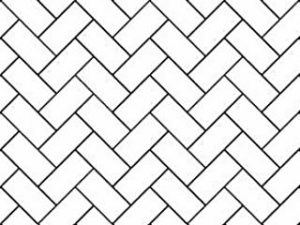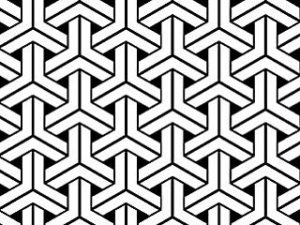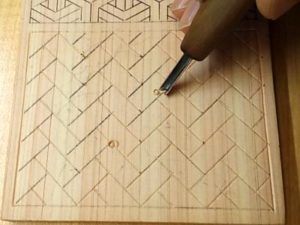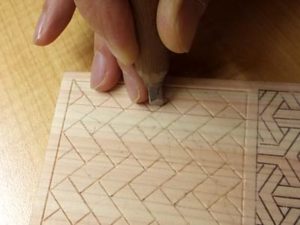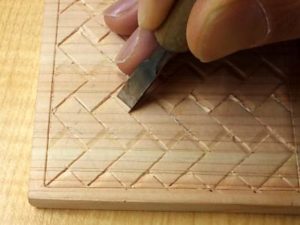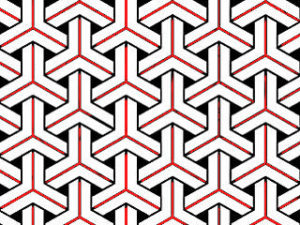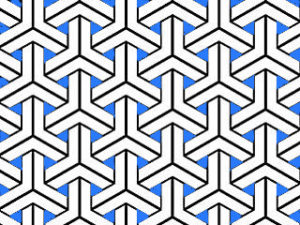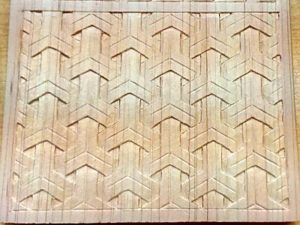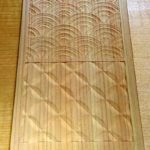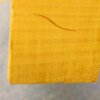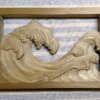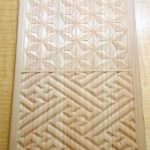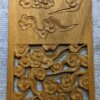How to carve patterns Part 5 ~ Higaki and Kumikikko~
I explain how to carve "Higaki" and "Kumikikko".
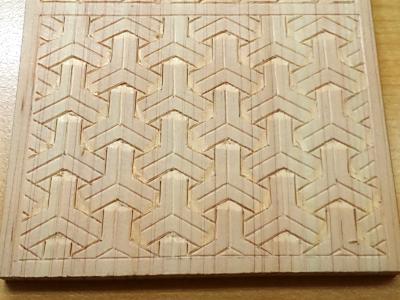
檜垣と組亀甲の木彫り
Preparation
Using carbon paper, trace Higaki and Kumikikkol onto a postcard-sized wooden board. The sketch can be downloaded from here (PDF of Higaki and Kumikaku) , so please use it.

1.How to carve Higaki
A fence made of cypress or other planks arranged in an alternating manner is called "Higaki" or "Ajiro" in Japanese. This time, I carve and express this cypress fence without weaving it.
Carve the sketch with a triangular chisel and make incisions with a sharp chisel.
Next, use a flat chisel to cut off the corners of the part that will go under the braid.
Next, finish with the sharp chisel and the flat chisel , imagining that it go under the braid.

2.How to carve Kumikikko
Kumikikko is also braided to create a mesh pattern.
First, use a triangular chisel to carve the lines on Kumikikko and then use a sharp chisel to make incisions. However, the red part in the sketch below requires only line engraving and no incisions are required.
Next, as with Higaki, use a flat chisel to remove the corners of the part that goes under.

Next, use a flat chisel to flatten the edges so that the connection with the cut corners looks natural.
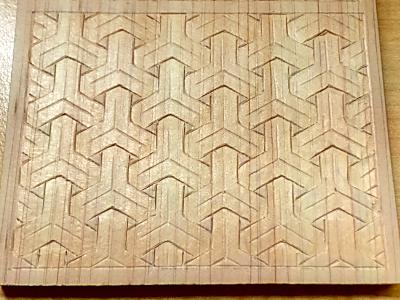
Next, lower the blue part of the sketch below one step. After making incisions on three sides of the triangle with a sharp chisel, use a 1.5mm flat chisel to pull it down one step.
Complete the finishing touches by re-engraving the missing lines.
組亀甲の木彫り完成
How to carve patterns
- From the lattice to the scales
- Raimon
- Asanoha and Sayagata
- Seigaiha and Sippo-Tsunagi
- Higaki and Kumikikko ←Current page displayed
- Mimasu-Tsunagi and Mimasu-Chirashi
- Ryusui
- Bundo-Tsunagi and Tatewaku
- Yamajimon and Misujidate
- Kemanmon and Gobosei
- Chidori and Chidori-Goshi
- Nejiume (Twisted plum)
- Kikubishi and Yaegiku
- Ichimatsu and Sankuzushi
- Kikko and Yagasuri
- Clouds
- Waves

